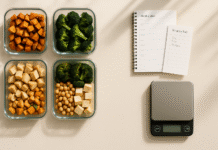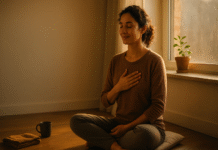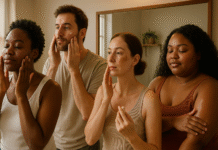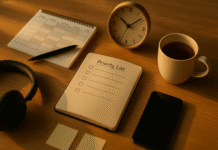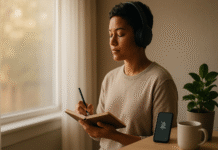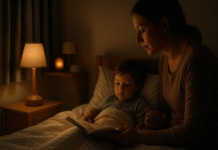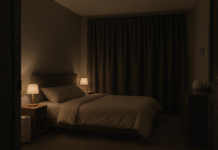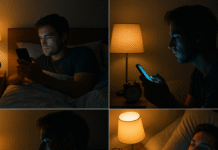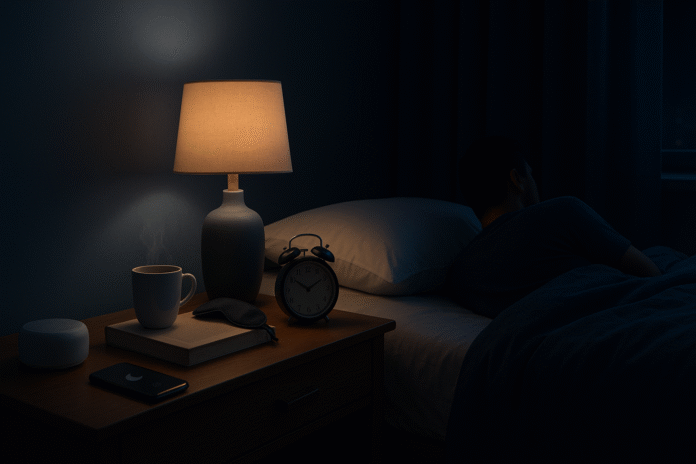You don’t need a fancy gadget to sleep better—you need a handful of habits that make good sleep the default. That’s what sleep hygiene is: the practical, daily behaviors and environment tweaks that train your body to fall asleep reliably and wake up refreshed. Most adults do best with at least seven hours of sleep per night, and these five evidence-backed tips will help you get there with less tossing and turning and more deep, restorative rest.
Medical disclaimer: The information below is educational and not a substitute for personalized medical care. If you suspect a sleep disorder (such as insomnia, sleep apnea, restless legs, or parasomnias), are pregnant, take prescription medications, or have a health condition, talk with a qualified clinician before making major changes.
Key takeaways
- Consistency wins. Anchor your wake time and keep it steady—your body clock loves predictable routines.
- Shape your cave. Cooler, darker, quieter bedrooms support deeper, less fragmented sleep.
- Time what you take. Caffeine, nicotine, alcohol, and heavy meals have strong timing effects on sleep—use curfews.
- Downshift on purpose. A simple wind-down routine and smart screen habits reduce pre-sleep arousal.
- Move smart and nap short. Daytime activity improves sleep; short, early-afternoon naps help without hijacking bedtime.
1) Keep a Consistent Sleep–Wake Schedule
What it is & why it works
Your body runs on an internal clock (the circadian rhythm) that likes regularity. Going to bed and getting up at similar times—yes, weekends too—helps the brain anticipate sleep, release sleep-promoting hormones on cue, and consolidate deeper stages of sleep. Most adults function best when they get at least seven hours each night, but the exact number varies by person. The fastest way to improve your sleep quality is not to hunt the “perfect” bedtime; it’s to pick and protect a consistent wake time and let bedtime fall naturally when your sleep pressure rises.
Requirements & low-cost alternatives
- A clock or phone alarm (use airplane or focus modes to avoid late-night alerts).
- A calendar or habit tracker to record consistency.
- Low-cost backups: analog alarm clock, sticky notes on your nightstand, a paper sleep diary.
Step-by-step (beginner friendly)
- Choose an anchor wake-up time you can sustain seven days a week (e.g., 7:00 a.m.).
- Back-plan your target bedtime by subtracting your sleep need (e.g., 7–8.5 hours). If you wake at 7:00, lights-out target might be ~11:00 p.m.
- Shift gradually: If your current schedule is far off, move 15–30 minutes earlier (or later) every 2–3 nights, not all at once.
- Get morning light within an hour of waking (open the curtains, step outside, or sit by a bright window).
- Protect the consistency: set a wind-down alarm 60 minutes before bedtime and treat wake-time as non-negotiable.
Beginner modifications & progressions
- If you’re a chronic night owl: Start by locking in a consistent wake time only for 10–14 days; let bedtime drift earlier on its own.
- If you’re underslept: Keep wake time fixed, but allow an earlier bedtime or a short, early-afternoon nap while you build back sleep debt.
- If work shifts vary: Maintain two stable patterns (e.g., day-shift schedule and night-shift schedule) rather than a new time every day; use the same wind-down ritual for both.
Recommended frequency/duration/metrics
- Daily: same wake time ±30–60 minutes.
- Track: sleep latency (minutes to fall asleep), night awakenings, and a 1–10 morning refresh score. Watch trends, not perfection.
Safety, caveats & common mistakes
- Don’t “make up” sleep with long weekend lie-ins; it confuses the clock and Monday feels like jet lag.
- If you’re extremely sleepy driving or operating machinery, prioritize safety—pull over, nap, and speak with a clinician about potential sleep disorders.
Mini-plan (example)
- Tonight: Set a wake alarm for 7:00 a.m. and a wind-down alarm for 10:00 p.m.
- Tomorrow morning: Get 10 minutes of daylight before coffee.
- This week: Keep wake time within 30 minutes daily; nudge bedtime earlier by 15 minutes every two nights until you feel refreshed.
2) Optimize Your Sleep Environment (Light, Temperature, Noise)
What it is & why it works
The ideal bedroom is a cool, dark, quiet cave. Cooler room temperatures cue the body’s natural night-time temperature drop. Darkness supports melatonin release and keeps your body clock aligned. Sound control reduces micro-arousals—those tiny awakenings that fragment sleep even if you don’t remember them.
Requirements & low-cost alternatives
- Temperature: A thermostat or fan.
- Darkness: Blackout curtains, a sleep mask, and simple fixes (tape over LED indicators, unplug unnecessary lights).
- Noise: Earplugs, a simple fan, or a basic white-noise device/app.
- Bedding: Comfortable mattress and pillows you actually like (no need to overspend).
Step-by-step (beginner friendly)
- Set your thermostat to a cooler range in the evening; most adults sleep best around 65–68°F (18–20°C).
- Black out the room: close curtains, cover LEDs, dim adjacent hallway lights. If total blackout isn’t possible, wear a soft, contoured sleep mask.
- Dial down device light: enable night-shift or warm color filters in the evening, and keep screens out of the bedroom if you can.
- Tame the noise: switch on a steady fan or white noise, or wear comfortable earplugs.
- Declutter the sensory field: clear the nightstand, put laundry away, move work gear out of sight—visual calm signals “bed equals rest.”
Beginner modifications & progressions
- Start with one upgrade per week: Week 1, temperature; Week 2, light; Week 3, noise.
- If your bed partner runs hotter/colder, use dual-zone bedding (e.g., separate blankets) to individualize comfort.
- If you rent or can’t install curtains, a sleep mask + painter’s tape over LEDs does a surprising amount.
Recommended frequency/duration/metrics
- Make the environment consistent every night; track night awakenings and time awake after sleep onset (WASO) in your diary to confirm improvements.
Safety, caveats & common mistakes
- Don’t obstruct vents or cover smoke/CO detectors.
- Avoid extreme temperatures or heavy blankets if you have certain medical conditions; when in doubt, consult your clinician.
- A common mistake is relying only on white noise to mask an actually fixable sound (like a loose window)—solve the source when possible.
Mini-plan (example)
- Tonight: Lower bedroom thermostat to ~66°F and place a towel under the door crack.
- Before bed: Tape over your router and charger LEDs; set your phone to “Do Not Disturb.”
- By the weekend: Install a darker curtain liner or buy a $10 sleep mask.
3) Time Your Intake: Caffeine, Nicotine, Alcohol, and Heavy Meals
What it is & why it works
What you consume—and when—can make or break your night. Caffeine and nicotine are stimulants that delay sleep and fragment it. Alcohol might make you drowsy at first, but it lightens and disrupts sleep later. Heavy or late meals can lead to reflux and awakenings. Smart timing restores your sleep drive and lets deeper stages unfold.
Requirements & low-cost alternatives
- A simple cutoff schedule written on your fridge or phone.
- Substitutes: decaf or half-caf coffee, herbal teas, sparkling water, fruit, yogurt, nuts.
- If you track beverages, a free notes app or paper log works.
Step-by-step (beginner friendly)
- Caffeine curfew: For most people, avoid caffeine for at least six hours before bedtime. If you aim for 11:00 p.m. lights-out, make your last caffeinated drink by 5:00 p.m. (earlier if you’re sensitive).
- Nicotine curfew: Avoid vaping/smoking in the evening; nicotine is stimulating and can cause night wakings. If you’re trying to quit, seek support—withdrawal can temporarily worsen sleep before it improves.
- Alcohol buffer: Leave several hours between your last drink and bedtime. Even moderate evening drinking can reduce sleep quality. Hydrate and keep it light.
- Meal timing: Finish larger meals 2–3 hours before bed. If you’re hungry late, take a small, balanced snack (e.g., yogurt with berries, a banana with peanut butter, or a handful of nuts) to prevent 3 a.m. wake-ups from low energy.
Beginner modifications & progressions
- Step down caffeine over 1–2 weeks: go half-caf, then decaf after lunch.
- Swap late-night drinks for a non-alcoholic ritual (herbal tea, warm milk, or sparkling water with lime).
- If reflux wakes you, elevate the head of the bed slightly and avoid trigger foods at dinner.
Recommended frequency/duration/metrics
- Daily curfews for caffeine/nicotine and most days alcohol-free evenings.
- Track: time of last caffeine, number of evening drinks, heartburn episodes, and sleep quality the next morning.
Safety, caveats & common mistakes
- Don’t quit nicotine cold turkey without support if you’re a heavy user; withdrawal may temporarily worsen sleep and mood.
- Alcohol interacts with medications and certain conditions; if you drink, mind dose and timing, and speak with your clinician if unsure.
- A common mistake is swapping coffee for strong caffeinated tea late at night—many teas still contain significant caffeine.
Mini-plan (example)
- Today: Set a “last caffeine” alarm for 4:30 p.m.
- This evening: If you drink, stop by 8:00 p.m. and hydrate.
- After dinner: If hungry at 10:00 p.m., choose a light snack, not a full meal.
4) Build a Wind-Down Routine That Actually Calms You
What it is & why it works
Sleep is not an on/off switch; it’s a dimmer. A wind-down routine lowers mental and physiological arousal so your brain can transition from problem-solving to sleep mode. Two pillars make this work: reducing evening light exposure (especially short-wavelength/blue light) and practicing relaxation or stimulus-control strategies that teach the brain “bed = sleep.”
Requirements & low-cost alternatives
- A wind-down alarm 60 minutes before bedtime.
- One or two calming activities: paper book, light stretching, journaling, warm shower, breathing exercise.
- Screen management: device “night mode,” blue-shift filters, or simply no screens in bed.
Step-by-step (beginner friendly)
- Create a 60-minute runway:
- 0–20 minutes: Close the day—write tomorrow’s to-do list, dim lights, set clothes out.
- 20–40 minutes: Calming activity—read fiction, stretch, journal gratitude, or take a warm shower.
- 40–60 minutes: Bedroom ritual—brush teeth, skincare, low lights, a few minutes of slow breathing in bed.
- Screen strategy: Aim for at least 30 minutes without screens before bedtime. If you must use them earlier in the evening, reduce brightness and use warm color settings.
- Stimulus control: Bed is for sleep and intimacy only. If you can’t sleep after ~20 minutes, get up and do a quiet activity in dim light until sleepy, then return to bed.
Beginner modifications & progressions
- Start with just one relaxing activity for 10 minutes, then lengthen.
- If your mind races, keep a notebook by the bed for a “worry dump” five hours before bedtime (problem-solve earlier; wind-down is for winding down).
- Progress by making the routine predictable—same steps, same order.
Recommended frequency/duration/metrics
- Every night. Track sleep latency, pre-sleep anxiety (1–10), and whether you stuck to your screen cutoff.
Safety, caveats & common mistakes
- Hot baths and showers can feel relaxing but time them at least an hour before lights-out so your core temperature can drop.
- Avoid intense breathwork or vigorous stretching right at bedtime if these rev you up.
Mini-plan (example)
- Tonight, T-60: Set phone to “Do Not Disturb” and dim house lights.
- T-40: Read a paper book for 15 minutes.
- T-15: 4 minutes of slow breathing (e.g., inhale 4 seconds, exhale 6 seconds), then lights out.
5) Move Your Body and Nap Smart
What it is & why it works
Daytime physical activity builds healthy sleep pressure and can improve sleep quality at night. Strategic napping can also help—short and early is the rule—while long or late naps can interfere with bedtime.
Requirements & low-cost alternatives
- A pair of shoes and a plan. Walking counts.
- A simple timer for naps.
- Optional: a mat for gentle mobility or yoga.
Step-by-step (beginner friendly)
- Add daylight movement: Take a 10–20-minute brisk walk most days, ideally outdoors.
- Time intense workouts wisely: If late-evening training keeps you wired, move it earlier; otherwise, do what’s sustainable and watch your data.
- Nap strategy: If you need a nap, set an alarm for 20–30 minutes, ideally in the early afternoon. Keep the room cool, dark, and quiet.
Beginner modifications & progressions
- Start with 10 minutes of movement on tough days.
- Increase to 150+ minutes of moderate activity weekly, spread across days, plus light movement breaks every 60–90 minutes if you sit a lot.
- If you’re new to exercise or have medical conditions, get clearance and build gradually.
Recommended frequency/duration/metrics
- Most days: movement or exercise.
- Track: total active minutes, steps, nap length/time, and sleep quality the following night.
Safety, caveats & common mistakes
- If late workouts consistently delay sleep, shift them earlier.
- Don’t use long naps to compensate for chronic short nights; fix the nights.
- If daytime sleepiness persists despite decent sleep hygiene, seek an evaluation for underlying issues.
Mini-plan (example)
- Today: 15-minute outdoor walk after lunch.
- If sleepy at 2:00 p.m.: 20-minute nap, alarm set; no caffeine after.
- This week: Test different workout times; note which gives you the best sleep.
Quick-Start Checklist (Print-Friendly)
- Select a fixed wake time you can keep daily.
- Set a wind-down alarm 60 minutes before bedtime.
- Keep the bedroom 65–68°F (18–20°C), dark and quiet (mask/earplugs if needed).
- Last caffeine at least 6 hours before bedtime; finish dinner 2–3 hours before.
- Screens off at least 30 minutes before lights-out; keep the phone out of bed.
- Add 10–20 minutes of daylight movement most days; nap 20–30 minutes early afternoon only.
- Track three simple metrics each morning: time in bed, estimated sleep time, and refresh score (1–10).
Troubleshooting & Common Pitfalls
“I’m in bed for eight hours but still feel groggy.”
Too much time in bed relative to actual sleep can fragment your night. If you regularly lie awake for long stretches, try a slightly later bedtime so sleep pressure is higher—then lengthen again once sleep is more consolidated.
“I fall asleep fine but wake up at 3:00 a.m.”
Check alcohol timing, room temperature (overheating is common), and late-night screen use. If you wake up, avoid the clock, keep lights dim, and use a calm distraction (breathing or gentle reading) until sleepy.
“I’m wired at bedtime.”
Move vigorous workouts earlier, reduce evening caffeine, and downshift earlier with dim lights and a consistent ritual.
“Weekends wreck my schedule.”
Cap the difference to ≤1 hour and use morning light and activity to snap back quickly.
“I tried everything and still can’t sleep.”
Persistent difficulty falling or staying asleep, daytime impairment, or loud snoring/pauses in breathing warrants a professional evaluation. Behavioral therapies for insomnia are highly effective, but they work best when tailored.
How to Measure Progress (Without Fancy Tech)
- Sleep diary (paper or notes app): Record bedtime, wake time, time to fall asleep, awakenings, total sleep estimate, and a 1–10 morning refresh score.
- Behavior adherence: Note “yes/no” for the day’s basics—consistent wake time, caffeine cutoff, wind-down, environment set.
- Simple trends: Look for a downward trend in time to fall asleep and nighttime awakenings over 2–4 weeks, and a gradual rise in refresh scores.
(Devices can be helpful, but they’re not required; treat them as guides, not gospel.)
A Simple 4-Week Starter Plan
Week 1: Foundations—Consistency & Cave
- Lock a wake time that fits your life.
- Set a wind-down alarm nightly.
- Adjust the bedroom: 65–68°F, darker, quieter (mask/earplugs if needed).
- Track a basic diary and morning refresh score.
Week 2: Timing—Intake & Screens
- Establish caffeine and nicotine curfews (caffeine: ≥6 hours before bed).
- Keep dinner 2–3 hours before bedtime; choose a light snack if hungry late.
- Aim for 30–60 minutes screen-free before lights-out.
Week 3: Wind-Down & Movement
- Lock in a three-step wind-down (close the day, relax, bedroom ritual).
- Add daylight movement most days; test workout timing.
- Use short, early-afternoon naps only when needed.
Week 4: Fine-Tuning & Troubleshooting
- Review your diary: what helped most? Double down there.
- Tweak bedtime slightly if you’re lying awake; adjust temp/light/noise as needed.
- If sleep is still poor despite adherence, book a visit with a clinician to screen for underlying issues and discuss behavioral therapy options.
FAQs
1) How many hours of sleep do I really need?
Most adults do best with seven or more hours per night. Your exact need is individual—use your daytime energy, mood, and focus as guides.
2) Is it bad to sleep in on weekends?
A little is fine, but large swings make Sunday feel like jet lag. Keep the difference to about an hour when you can.
3) Do I have to avoid all screens at night?
Not necessarily, but less helps. Keep brightness low, use warmer color settings, and aim for at least 30 minutes of screen-free time before bed. Keeping devices out of the bed itself is a powerful upgrade.
4) I wake at 3:00 a.m. and can’t fall back asleep—what should I do?
Stay calm, keep lights dim, and practice a relaxing activity out of bed. Check daytime factors (late caffeine, alcohol, stress) and bedroom factors (temperature, light) the next day.
5) Are naps okay if I’m tired?
Yes—short and early. Aim for 20–30 minutes in the early afternoon. Long or late naps can push bedtime later.
6) Do evening workouts ruin sleep?
It depends on you. If late sessions keep you wired, move them earlier. Otherwise, regular activity—at any time—often supports better sleep.
7) Is alcohol a good sleep aid?
It can make you sleepy at first, but it ultimately disrupts sleep later in the night. If you drink, finish several hours before bedtime and keep it light.
8) What about caffeine—how late is too late?
As a general rule, avoid caffeine for at least six hours before bedtime. Sensitive sleepers may need a longer buffer.
9) Do I need special bedding or an expensive mattress?
Comfort matters more than price. If your current setup leaves you sore or hot, adjust pillows, sheets, or use separate blankets before upgrading big-ticket items.
10) How long before I notice improvements?
Many people see changes within 1–2 weeks of consistent habits, with bigger gains over 3–4 weeks. Track progress to keep momentum.
11) What if I snore loudly or stop breathing at night?
That’s a red flag for a sleep-related breathing disorder and deserves prompt evaluation. Lifestyle changes help, but screening and treatment are crucial.
12) Is there a best temperature for sleep?
Most adults sleep best in a cool room—often around the mid-60s °F (upper teens °C). Experiment within a few degrees to find your sweet spot.
Conclusion
Better sleep starts with simple, repeatable choices. Pick a wake time and stick with it. Shape your room into a cool, dark, quiet cave. Time your caffeine, nicotine, alcohol, and meals. Create a wind-down that actually calms you. Move during the day and nap smart. Do these consistently for a month and you’ll teach your body how to sleep well again—no magic required.
Ready to start tonight? Set your wake time, dim the lights an hour before bed, and give yourself permission to rest.
References
- About Sleep. Centers for Disease Control and Prevention. May 15, 2024. https://www.cdc.gov/sleep/about/index.html
- The Best Temperature for Sleep. Sleep Foundation. Updated July 11, 2025. https://www.sleepfoundation.org/bedroom-environment/best-temperature-for-sleep
- Caffeine effects on sleep taken 0, 3, or 6 hours before going to bed. Journal of Clinical Sleep Medicine. 2013. https://pubmed.ncbi.nlm.nih.gov/24235903/
- Blue light has a dark side. Harvard Health Publishing. July 24, 2024. https://www.health.harvard.edu/staying-healthy/blue-light-has-a-dark-side
- Napping: Do’s and don’ts for healthy adults. Mayo Clinic. November 6, 2024. https://www.mayoclinic.org/healthy-lifestyle/adult-health/in-depth/napping/art-20048319
- Exercising for Better Sleep. Johns Hopkins Medicine. (n.d.). https://www.hopkinsmedicine.org/health/wellness-and-prevention/exercising-for-better-sleep
- Sleep Tips. National Sleep Foundation. (n.d.). https://www.thensf.org/sleep-tips/
- Alcohol and Sleep. Sleep Foundation. July 16, 2025. https://www.sleepfoundation.org/nutrition/alcohol-and-sleep
- Cognitive Behavioral Therapy (for Insomnia overview). Sleep Education (American Academy of Sleep Medicine). June 29, 2023. https://sleepeducation.org/patients/cognitive-behavioral-therapy/





